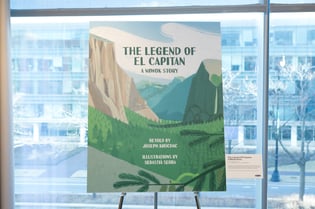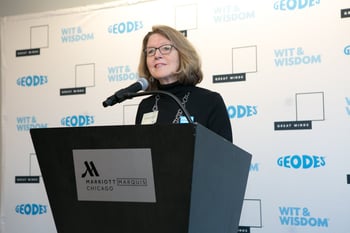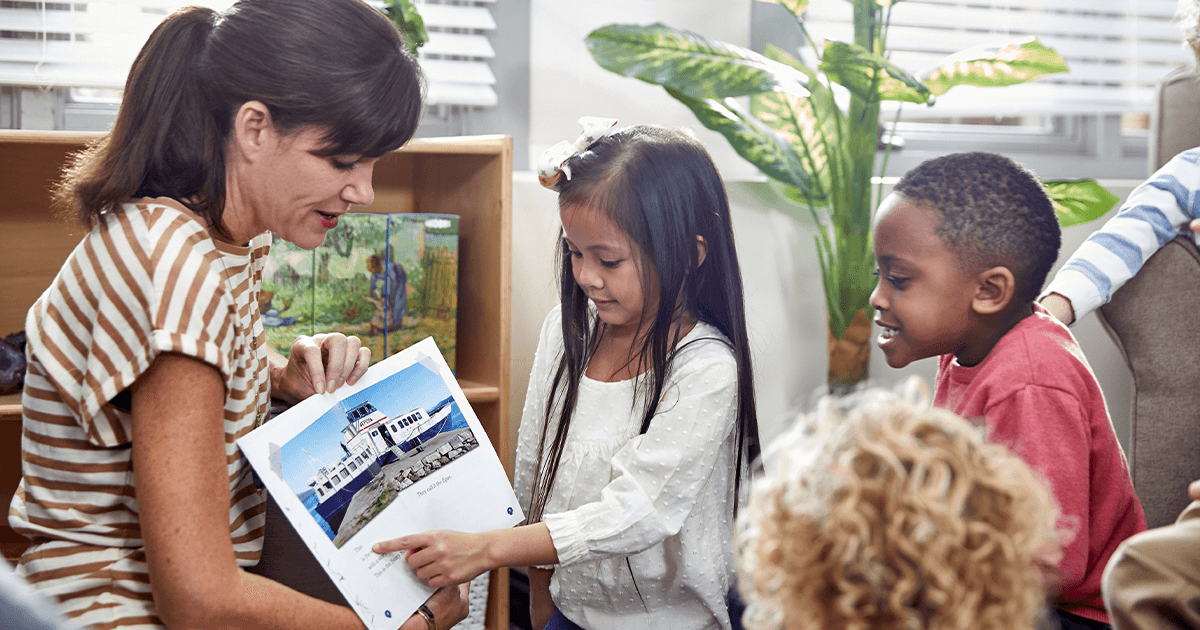Posted in: Aha! Blog > Great Minds Geodes Blog > High-Quality Curriculum knowledge building > The Story of Geodes, Part 2
Note: Great Minds® featured Geodes®, a new library of books for emerging readers, at the ASCD Empower19 conference in Chicago. Remarks follow. Part 1 is available here.
Since the fall of 2018, there has been growing synergy around “the science of reading.” Journalist Emily Hanford delivered a podcast titled “Hard Words.” In it, she exposed the lack of phonics expertise in my generation of teachers. She joined others in long-fought advocacy for every child to have systematic phonics instruction.
And there were other voices with a complimentary yet equally important message. Dan Willingham, a University of Virginia researcher, kept pounding the importance of building knowledge while reading. Catherine Snow, a Harvard professor, kept pressing for the necessity of unconstrained skill development by building knowledge and vocabulary in even the youngest students.
But in the early days of 2017, as the Geodes vision began to form, we heard the voices of our own children, students we taught, and two relentless advocates for children with dyslexia: Lynne Munson and Barbara Wilson. Lynne had an unrelenting knowledge-building passion, and Barbara Wilson had a passion for the deep study of systematic phonics.
We wondered aloud: Could children read to learn while learning to read? That question drove us to create something different: a series of texts that combined creativity, beauty, language, and knowledge in the context of a carefully constructed phonics sequence.
Our goal is to carefully craft 176 Geodes books for Kindergarten through Grade 2 but to create them with a sense of urgency because of their importance: We plan to complete the entire project in 39 months. Every single text requires 67 milestones to ensure the quality of text, illustration, and scientific and historical accuracy, along with careful alignment with the reading and phonics scope and sequence.
Guided by our managing editor and project coordinator, our writing team consists of 11 editors and 36 authors far-flung all over the United States. Our creative director leads 8 designers, 4 photographers, and 28 illustrators from all over the world, including Colombia, Italy, Argentina, and Spain. In addition, both Great Minds’ and Wilson’s leadership teams carefully review every line of every text for phonics use and information accuracy. Collaboration happens on countless videoconferences.
Our goal is to make sure every child’s first reading experience is pure magic. Students learn to read as they progress through texts based on a researched sequence of sound- spelling patterns. But, throughout the K–2 Geodes books, students also read to learn as they cross six continents to visit 33 countries. They encounter 35 animals along the way, including mammals, fish, birds, insects, and reptiles. They pause to study the art of 11 artists: Dürer, Mondrian, Van Gogh, Millais, Seurat, Hadid, Bierstadt, and more.
And young readers encounter so many more topics in Geodes.
In Kindergarten, children learn about Bangkok’s floating markets, the mudding of a mosque in Mali, and how red kangaroos sit on their tails for balance as they fight.
First graders learn how Louis Braille invented a system of raised dots for reading but also how thorny devils have fake heads and how bees do a dance to communicate where to find food.
 Second graders learn about Jackie Robinson’s role in integrating baseball, the legend of El Capitan, and the differences between the way a cow digests its food and the way an ibis digests its food.
Second graders learn about Jackie Robinson’s role in integrating baseball, the legend of El Capitan, and the differences between the way a cow digests its food and the way an ibis digests its food.
And when each student finishes reading her book, an adult reads aloud “More,” a section at the back of every text that sends a message that it’s important to be curious, that there’s always more to learn.
Geodes help students build knowledge as they read accessible, beautiful, and engaging books, making a child’s first reading experience truly magical.
Submit the Form to Print

Lorraine Griffith
Lorraine Griffith is a senior content architect for Wit & Wisdom at Great Minds. In one rural Title One public school for almost 30 years, she began as a substitute teacher, teacher assistant, and finally classroom teacher in grades K, 4, and 5. She spent her last few years in reading remediation. During her teaching years, she worked as a consultant for the early days of Core Knowledge and worked with Tim Rasinski to create knowledge-building resources for developing reading fluency.







